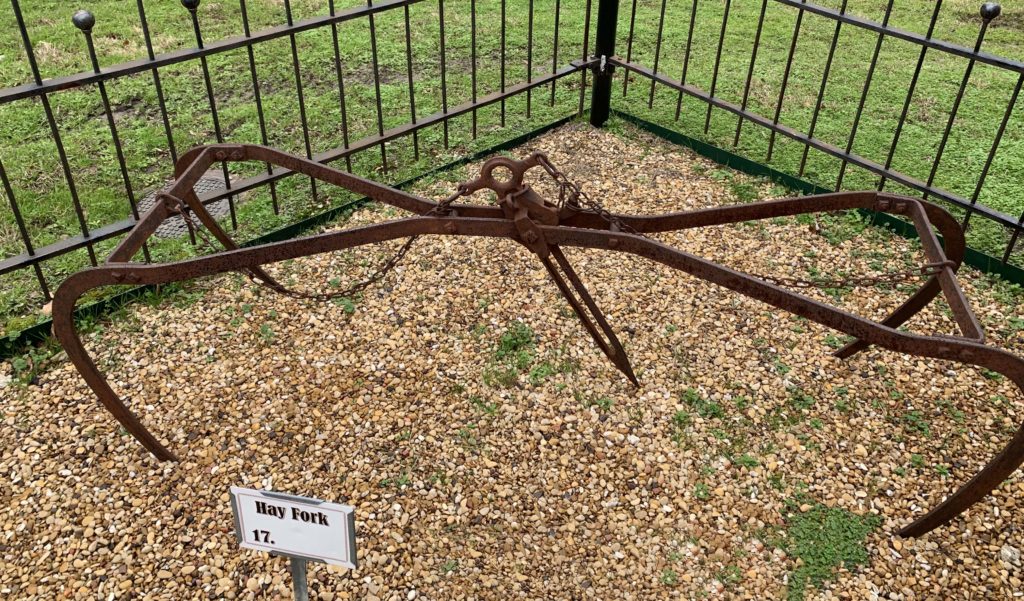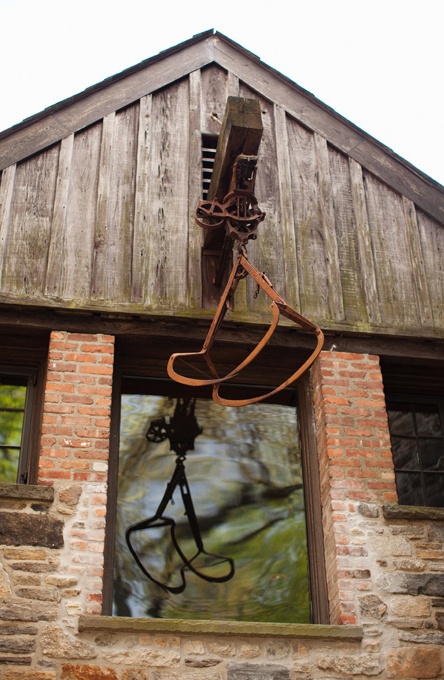Farm Equipment
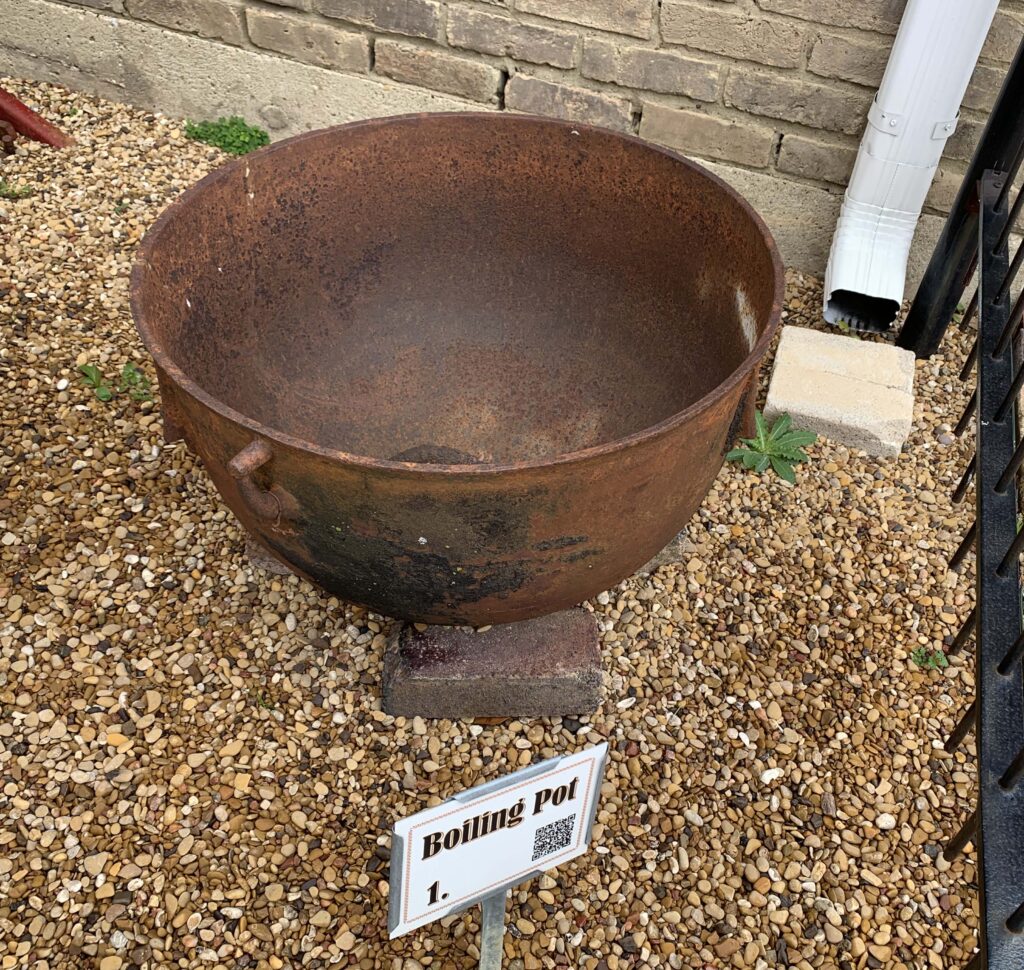
Boiling Pots were an important part of pre-industrial farm life. These large, iron containers were used for washing clothes, making soap, and cooking. The short legs on the pot allow for a fire to be build around the pot instead of underneath. Lye soap was made by heating the fats and oils produced from the plants and animals on the farm. To wash clothes the pot would be filled with water, brought to a boil, then the lye soap was added, then the clothes. Tree limbs were often used as a paddle to push the clothes down in the water and to lift them out to another pot for rinsing. Then clothes were hung on a line to dry. Wash out the pot, light another fire, and it’s ready to be used for cooking.
Turning Plows, also known as walking plows, were a common sight in pre-industrial farm life. They were used to break sod and turn over the soil in an action called primary tillage. This action increased the potency of the soil by mixing in the nutrients of plant material from the previous harvest, aerated the soil, and removed any weeds that may have grown. Plows with moldboards that lift and turn over the soil likely date back to the third century BCE. After completing primary tillage, other implements were used for secondary tillage to finish preparing the soil for planting.
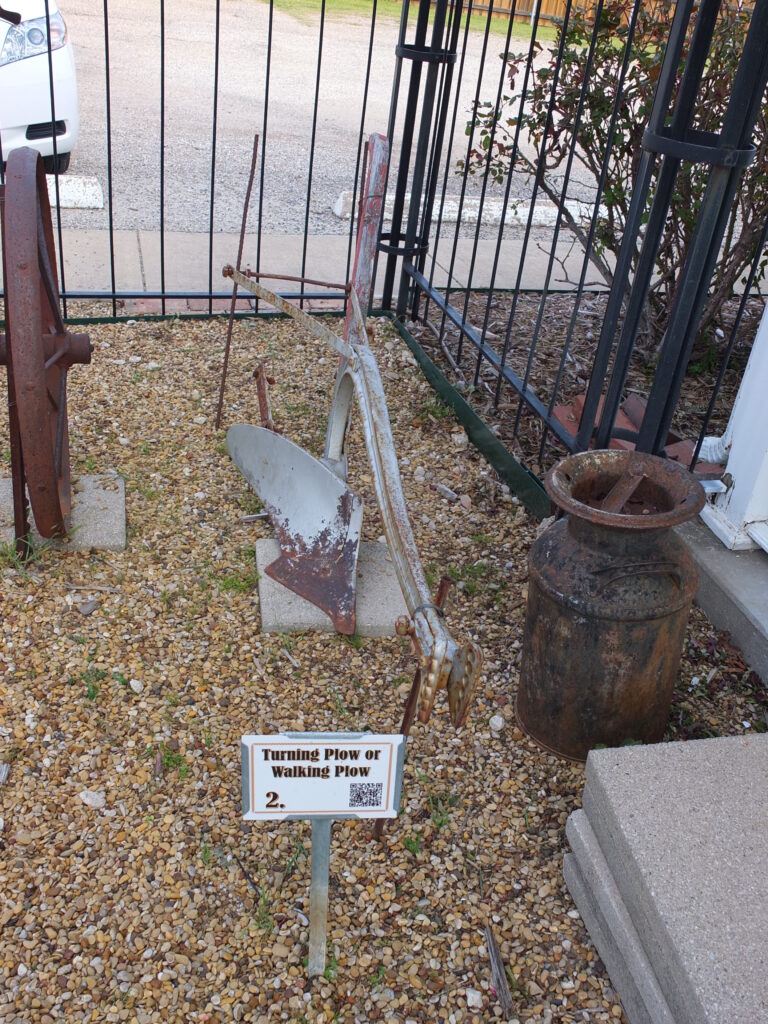
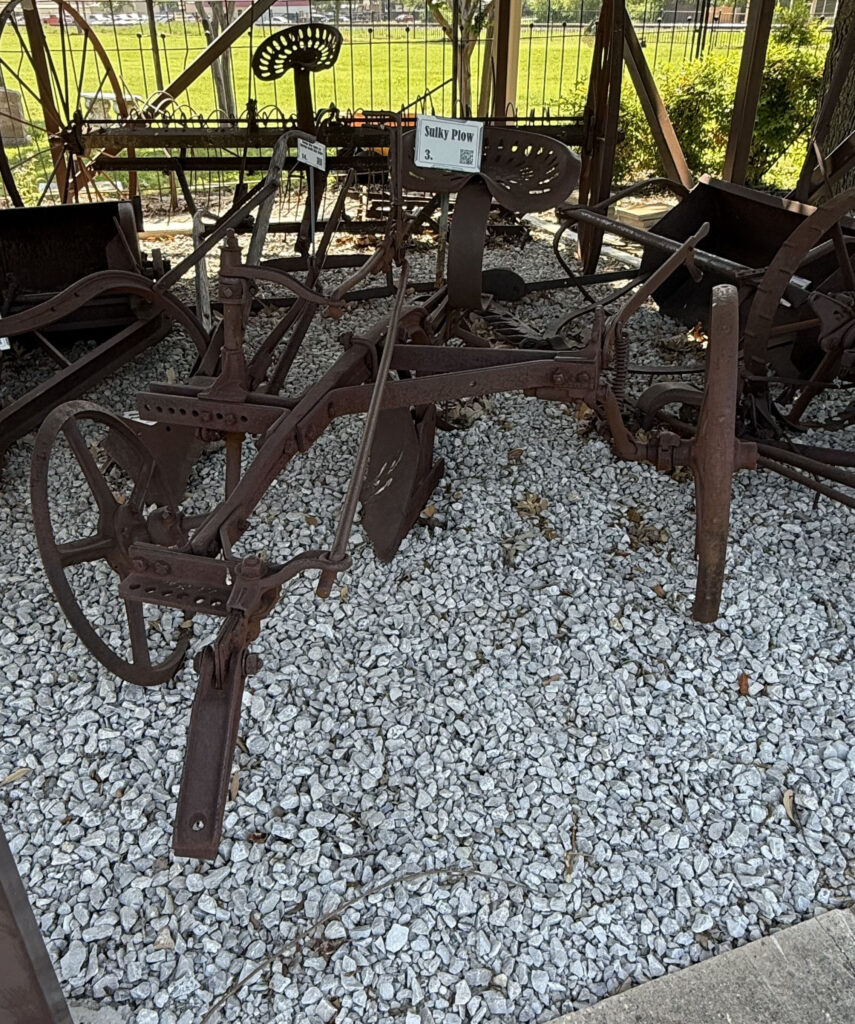
Sulky Plows perform the same basic operation as the walking plow. They have a single bottom, similar to the walking plow. Pulled by a team of animals and built with wheels and levels for adjustments, they are much easier to operate and can plow far more land in a day than can be plowed with a walking plow. Similar plows with more than one bottom, known as gang plows, were often used on larger farms.
Bedding Plows, also known as middle breakers, were used for primary tillage, in much the same way as moldboard plows. They were typically pulled by a single horse or mule along with two additional plow blades of various sizes. Middle breakers were generally used in fields where a crop — such as cotton — was grown in a raised bed or ridge, as it could be used to burst open old ridges from a previous crop, or form a new row for planting.


4 Peg-tooth Harrow, also known as Spike-Tooth Harrows, are secondary tillage implements. Various secondary tillage implements will turn, chop, or pulverize the soil and organic material into smaller pieces. A peg-tooth harrow will uproot small weeds and smooth the soil to help eliminate a rough surface left by more aggressive tillage implements. Typically, two or more sections of a harrow, like the single one on display here, are used side-by-side to cover large areas more quickly.
Spring-Tooth Weeders are used to remove small weeds and break up the crust that can form on top of the soil. This tool is used after the crop has started to grow but while the plants are still fairly small. Most weeds, which at this stage are even smaller than the crop plants, will be removed.
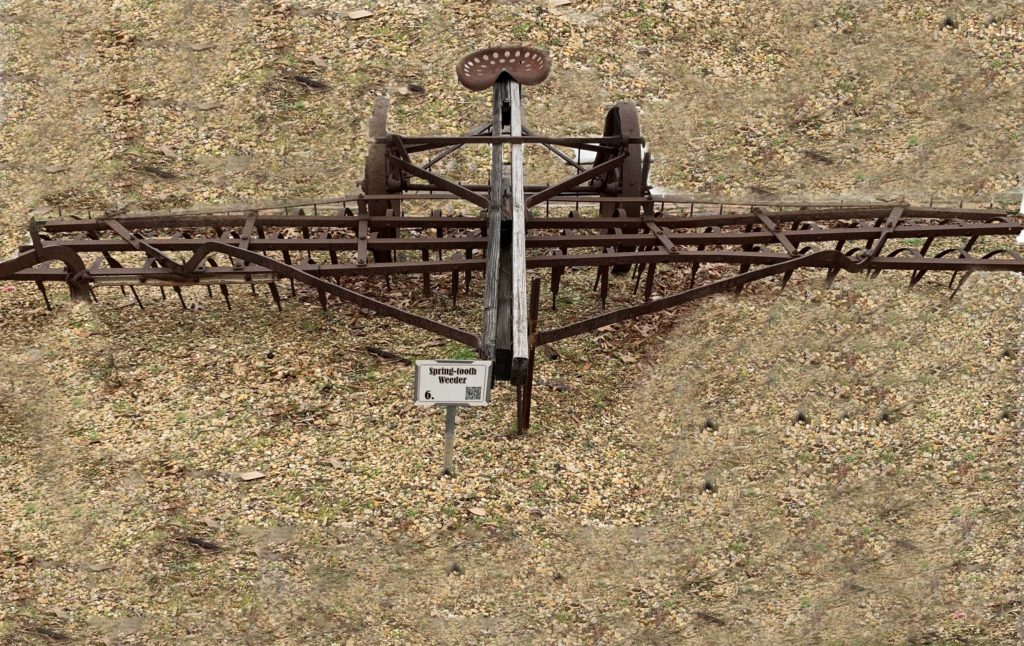

Cultivators are secondary tillage implements used to remove weeds from between the rows of growing crops. The teeth or rotary disks on the cultivator are pulled through the soil, killing weeds and aerating the land. A single horse or mule would pull a cultivator while the farmer walked behind and guided it between two rows. Notice this cultivator has 3 blades.
Revolving Scrapers, pulled by a tractor, were used to dig soil and move it from one place to another. They might have been used to level a field, dig a farm pond, or to improve drainage ditches. They were an important tool for landscaping before the advent of mechanized tractor plows.
The video below is quite old and not the same model, but the concept is the same.

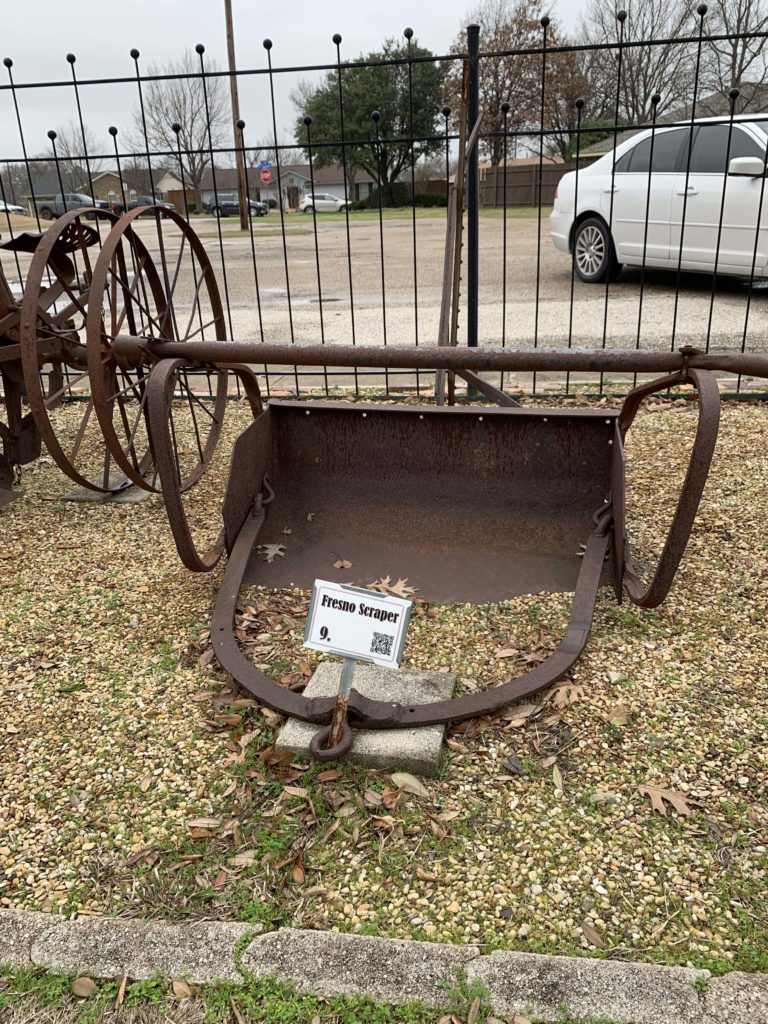
The Fresno Scraper is an improvement on an even older machine called the slip scraper, but an earlier implement than the revolving scraper. It was used to move soil in the construction of ditches and canals. The scraper performed the same jobs that could be done with a revolving scraper but with better dirt collection. Dirt was lifted into a C-shaped bowl were it could be dragged along with much less friction. By lifting the handle, the operator could cause the scraper to bite deeper. Once the soil was gathered, the handled could be lowered to raid the blade off the ground so it could be dragged to a low spot and dumped by raising the handle very high. The name “Fresno” is derived from the Fresno Agricultural Works, a company that produced many of these scrapers.
A Lister Plow and Planter is farming tool for plowing and planting at the same time. It is adapted for regions with little rainfall and where erosion is a concern. The plow-like bottom makes a deep trench(furrow) and the seed is placed in the middle of the trench. Cultivation gradually adds more soil to the row, creating a ridge and placing the roots deeper in the ground where moisture is more plentiful.
Check out this link to the Portal to Texas History for a 1914 patent for improvements to the Lister Plow and Planter for a great diagram and in depth detail from Texan, James O. Bigham. https://texashistory.unt.edu/ark:/67531/metapth858536/
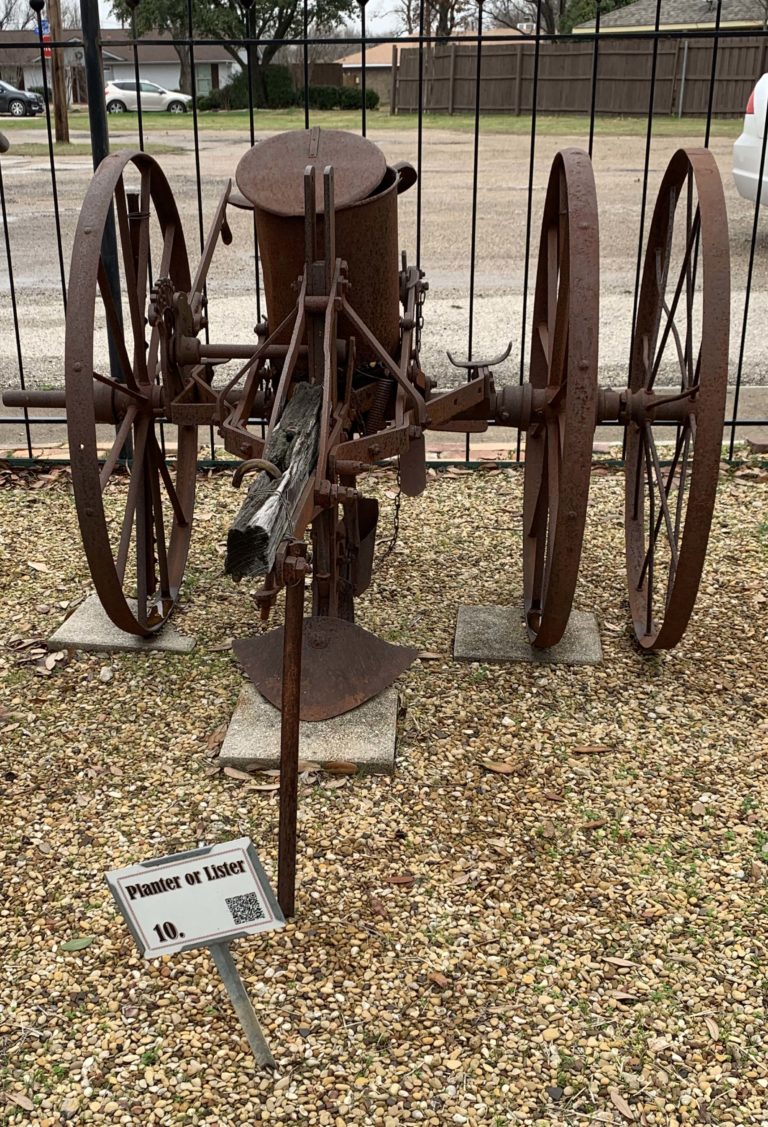

The Walking Planter, also called a single-horse planter, was used to plant row-crops such as cotton or corn. It could be used to plant the crop “on the flat.” It could also be used to plant in a furrow that was previously made using a middle breaker plow.
Seed Drills were built to be pulled by a tractor. They were used to plant small grain and grass crops. These types of crops are usually broadcast seeded (no rows) or planted in rows that are very close together. This drill can add fertilizer to the field at the same time it plants the seeds. As displayed, one side of this drill has the disk openers in the ground in the operating position. The other side has the openers in the raised transport position.
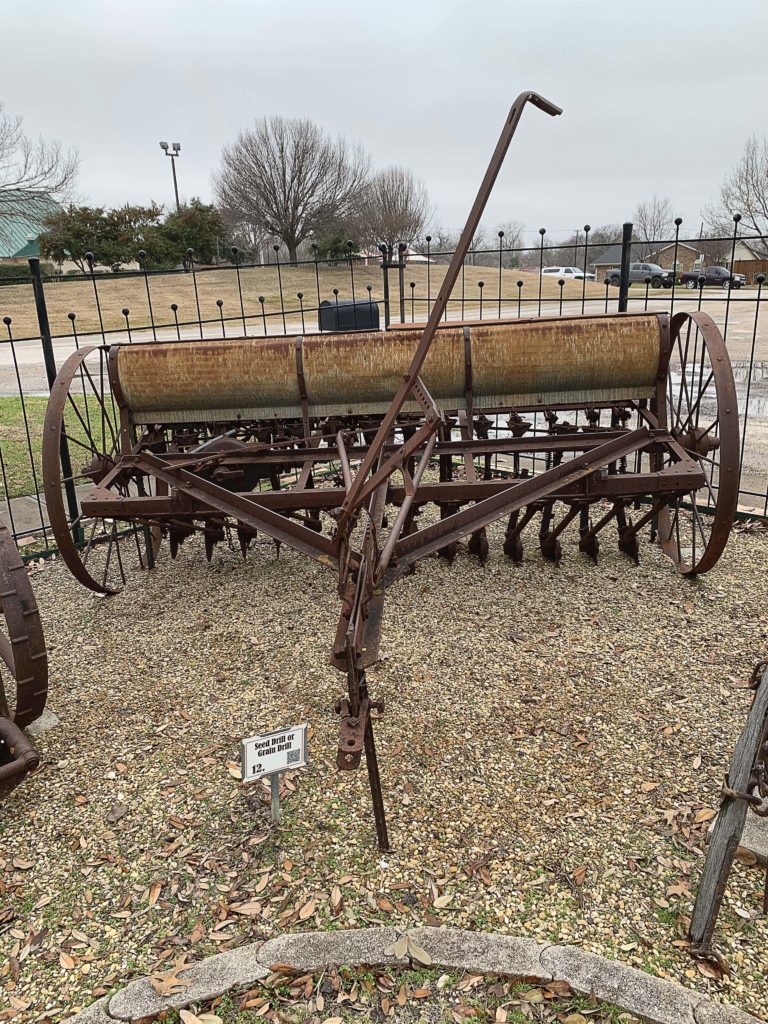
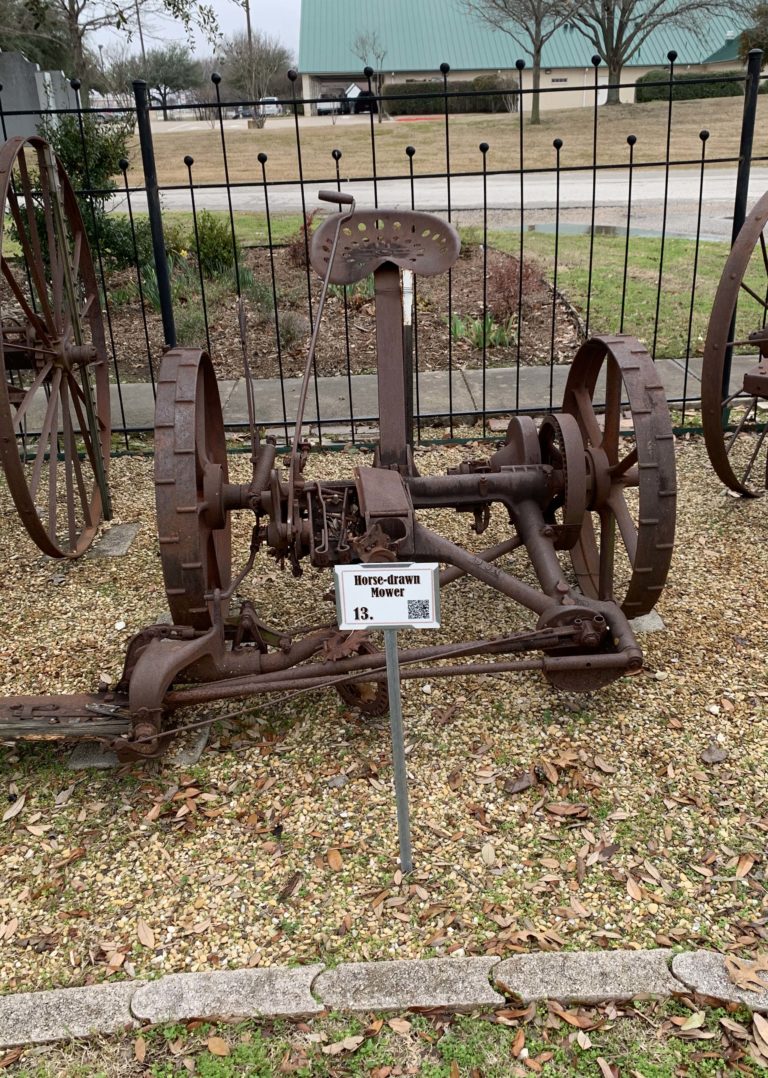
This is a McCormick-Deering No 6 Horse Drawn Mower. This mower started manufacturing in 1911 by the International Harvest Company through 1929 when the No 7 model was introduced improvements with an enclosed gear box. A mowing machine was used to cut grass crops so they can be gathered for animal feed and for keeping yards tidy.
The video below demonstrates how the mower operates and how it stands up to a modern push mower!
A Hay Rake performed the first step to gather grass crops after they were cut. This machine gathered the grass as it was pulled across the field by one or two horses. When the tines in the back were full, the farmer raised them, dumping the grass in one place. If the farmer was careful, he could dump the piles in rows that made it easier to finish gathering the crop.
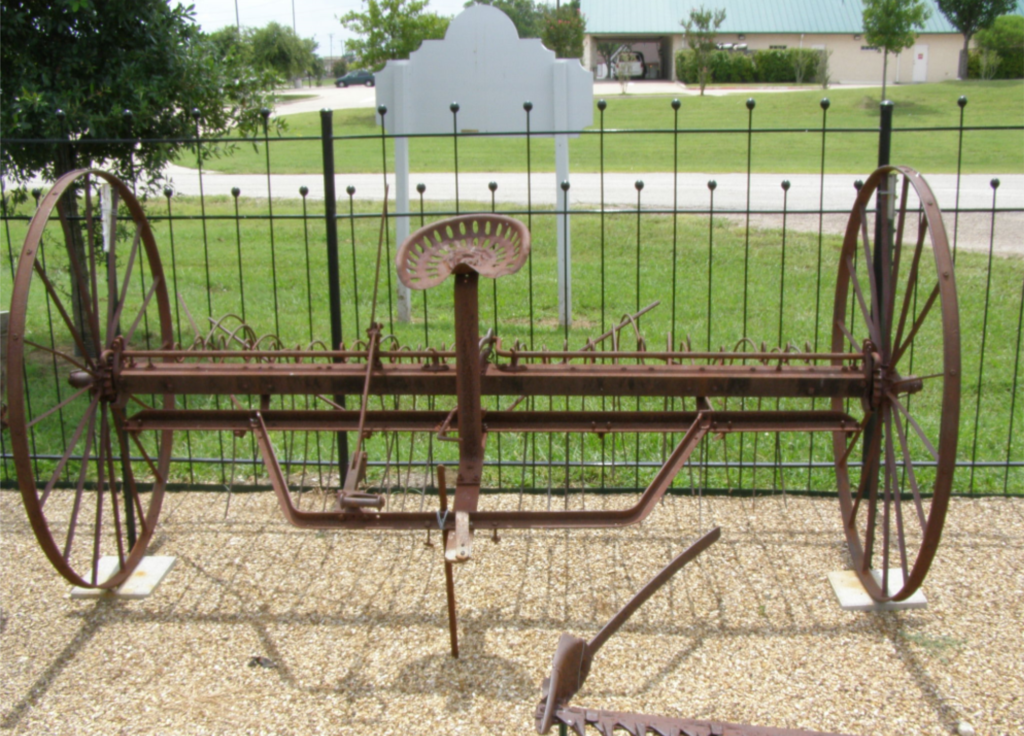
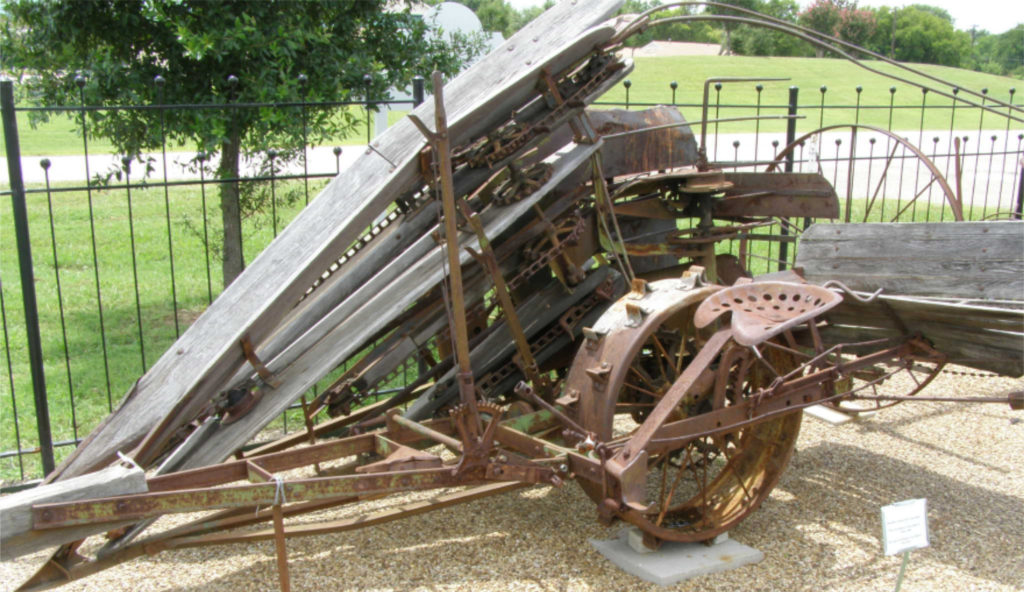
After many years of weather this particular Corn Binder succumbed to the elements. This piece of equipment used to be a common sight on many farms. It was used to cut corn stalks off near the ground and gather them into bundles that were dropped on the ground for later gathering. In some parts of the country, they were used to harvest sugar cane. They were initially pulled by a team of horses, though in later years tractors were used. The first corn binders were made around 1890. By the 1930’s, these machines started to be replaced by field harvesters that would cut the crop, chop it, and deliver it directly into a wagon in a single operation. The last corn binders were build in the 1950’s.
A Grapple Horse Hay Fork could be attached to a horse rig or tractor and were used to relocate hay bales or large piles of hay. To visualize this process, think of the claw in a prize machine. These could also be attached to a trolley and pulley system and move hay in and around a barn.
